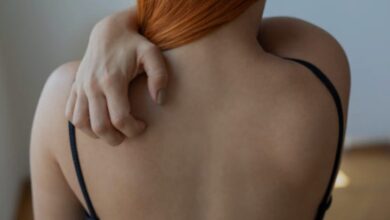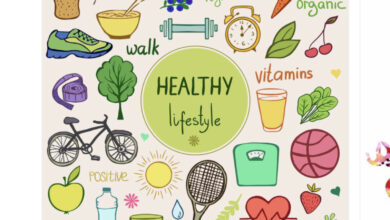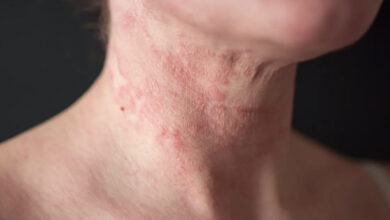Sunscreens: Wish We Had Them When I Was Young

Way back in the days of my youth, it was common to get a sunburn. Society highly regarded those individuals who displayed a golden brown tan every summer, and I was determined to be one of those “cool” people. But I had one basic flaw; I had the wrong parents. They were both very fair complected, especially my mother who had blue eyes and a few freckles. My brother and I both received the recessive genes for skin color and ended up with curly, red hair, blue eyes, and freckles. So we “suffered” endless, painful sunburns with blistering and peeling several times every summer in search of the coveted golden suntan. One time my freckles became so numerous that they grew together making it look like I had a real tan. But instead, I burned and peeled for the umpteenth year in a row and moved one step closer to developing skin cancer.
It’s that youthful indifference and indiscretion that twenty, thirty, forty years later has you in the dermatologist’s office getting your latest suspicious skin lesion biopsied. Skin cancers take many years to develop. Ultraviolet A and B rays both have damaging effects on the skin, but those effects don’t show up until later in life. Then, boom, all of a sudden, one skin cancer after another appears. You have standing appointments at the dermatologist’s office every 3-6 months for the doctor to check you over. And something is found nearly every visit. You think “will it ever stop?”. Boy, if we just had had these powerful sunscreen lotions then.
But all we had was Sea and Ski, Coppertone, baby oil with iodine, or nothing. Our stubbornness caused us to go “natural” and let whatever would happen happen. We were ignorant. We didn’t know we were endangering ourselves.
Scientists, chemists, dermatologists, consumer product companies, and pharmaceutical company researchers put their heads together to develop chemicals that when applied to exposed skin, were protective against harmful ultraviolet A and B rays. Two classes of drugs emerged that did the same thing but by different methods. Both drug classes provide a barrier against UVA and UVB rays, one by physically blocking the rays, the other by chemically altering their penetration.
The two classes are as follow:
Mineral Barrier sunscreens: Two such drugs, zinc oxide and titanium oxide, provide a physical barrier to block UVA and UVB rays from penetrating the skin.
Chemical Barrier sunscreens: A whole host of compounds have been found that chemically interrupt the penetrating effects of A and B rays. Oxybenzone is such an ingredient found in 96% of all sunscreen products. Avobenzone, Retinyl palmitate, Octinoxate, Octocrylene, Octisalate, and Homosalate are other chemical barrier drugs used together with Oxybenzone.
All of these drugs work very well when applied properly.
A discussion comparing UVA and UVB rays is worth because they both are responsible for causing skin cancer.
UVA Rays: UVB Rays:
Have a Long wavelength (320-400) Have a short wavelength (290-320)
Present all year, every day Year round, worst 10A-4P, Apr-Oct
95% of sun’s rays are UVA Comprise only 5% of sun’s rays
“Silent killer”, effect not felt, no sunburn Causes sunburn
Penetrates deep levels of skin Less deep penetration
Causes wrinkling, aging, darkening Cause skin cancer, esp. melanoma
Destroys skin elasticity SPF measures protection vs. UVB rays
Major contributor to any kind of skin CA
The sun produces 500 times more A rays than B rays
While both A and B are important, the major emphasis of sunscreen products is the prevention of harm from UVB rays.
Now that we know what UVA and UVB do, what do the SPF numbers on product labels mean?
“SPF” stands for “sun protection factor,” and DOES NOT indicate the strength of the sunscreen. Instead, SPF is a measure of the length of the duration of action of the product. The higher the SPF, the longer it provides protection. For example, an SPF of 30 means “you could be out in the sun 30 times longer before you get sunburned than you would be able to if you went out without sunscreen.” SPF 30 filters 97% of UVB rays, SPF 50 filters 98% of UVB’s, while SPF 15 lasts half as long but filters 93% of UVB rays. As mentioned above, SPF is a measure of the protective effect against the more harmful UVB rays. Sunscreen products all have nearly the same efficacy, but their durations of screening effect differ. It is always recommended to re-apply sunscreens every two hours to maintain the efficacy.
Water-resistance and “broad-spectrum” coverage are essential recommendations for successful sunscreen protection. The broad spectrum designation simply means the product’s ingredients are effective against all damaging sun rays, not just UVB. This is very important for adequate skin cancer protection.
The American Academy of Dermatology (AAD), the dermatologist’s professional organization, recommends a ”broad spectrum, water-resistant, SPF 30 sunscreen reapplied every two hours.” With this recommendation “we can help reduce or spot skin cancer sooner.” Better yet, used properly and regularly, sunscreens should reduce the occurrence of skin cancer significantly.
There is a organization called the “Enviromental Working Group” which has done its darndest to find harm in sunscreens and question their efficacy. They claim that of the 650 sunscreen products they tested, 66% of them were ineffective. As with any medication, it works better for some and not so well for others. The AAD and the FDA, which regulates sunscreens, strongly deny EWG assertions. They affirm that “no data and no study” has shown that oxybenzone and retinyl palmitate, common in sunscreen formulations, “increase the risk of skin cancer in humans” or “cause any significant health problems.”
Speaking as one who has had many skin cancers and one who abused his skin as a youth, I can vouch for the efficacy and safety of the products I’ve used.
Dr. G’s Opinion: For a number of years, I’ve regularly used Banana Boat Sport SPF 50 sunscreen. I have yet to experience a sunburn or adverse effect from this product. Since it worked so well, I have not tried other brands. If it ain’t broke, don’t fix it. I recommend it un-
equivocally. Sunscreen use is vitally important. So even those of you who tan easily should use sunscreens. Any effort at prevention is worthwhile.
ADD: Consumer Reports top 3 lotions are La Roche-Posay 60, Equate SPF 50, Bull Frog Land Sport SPF 50. Top 3 sprays are Trader Joe’s SPF 50, Banana Boat Mist spray SPF 59, CVS Health Beach Guard SPF 70.
References:
University of Iowa Hospital and clinics.org/health-topics/ UVA-UVB
American Academy of dermatology.org/public/skin-cancer
paulaschoice.com/expert-advice/skincare
webmd.com/beauty/features/sun-safety-sunscreen
Consumer reports.org. July 2018.



